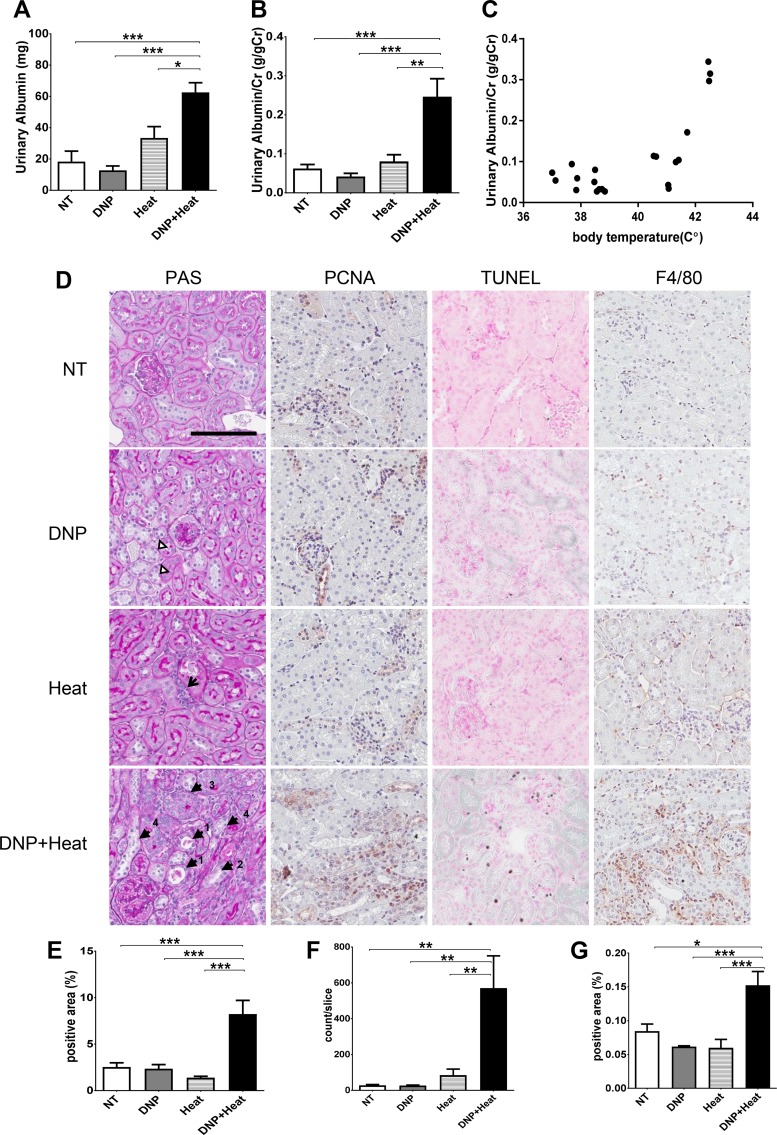Fig. 3.
A: albuminuria. Urinary albumin (uAlb; spot urine at the 3-h rest period after the second heat exposure) was increased in the 2,4-dinitrophenol (DNP) + Heat group. B: uAlb corrected by urinary creatinine (uAlb/uCr) was also increased in the DNP + heat group. C: correlation between core body temperature and uAlb/uCr. Core body temperature after the first heat exposure (Heat #1) was correlated to uAlb/uCr (r = 0.715, P < 0.001). D: periodic acid-Schiff (PAS) reagent, TUNEL, and immunohistochemistry with anti-proliferating cell nuclear antigen (PCNA) and F4/80. Magnification: ×400. Scale bar = 100 µm. Renal pathology was observed with PAS staining. PAS showed core body temperature tubular injury in DNP (brightness of the cytosol; white triangles), interstitial cell infiltration in the heat group (arrow), massive tubular injury in the DNP + heat group, tubular dilatation (arrowheads labeled “1”), debris of tubular lumens (arrowheads labeled “1”), loss of the brush border (arrowheads labeled “2”), tubular cell proliferation (arrowheads labeled “3”), and tubular cell swelling and loss of nuclei (arrowheads labeled “4”). PCNA showed the increase of tubular cell proliferation as nuclear and cytosolic stains of brown. TUNEL showed the increase of cell death as dark blue stains of nuclei and normal cells as pink (counterstain with nuclear fast red). F4/80 showed the increase of macrophage as stains of brown. E–G: quantification of the number of positive cells [PCNA (E), TUNEL (F), and F4/80 (G)] was analyzed by an Aperio scanner. n = 5 mice/group. *P < 0.05; **P < 0.01; ***P < 0.001.

